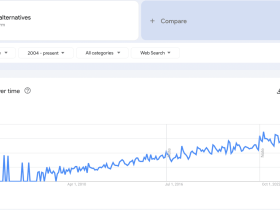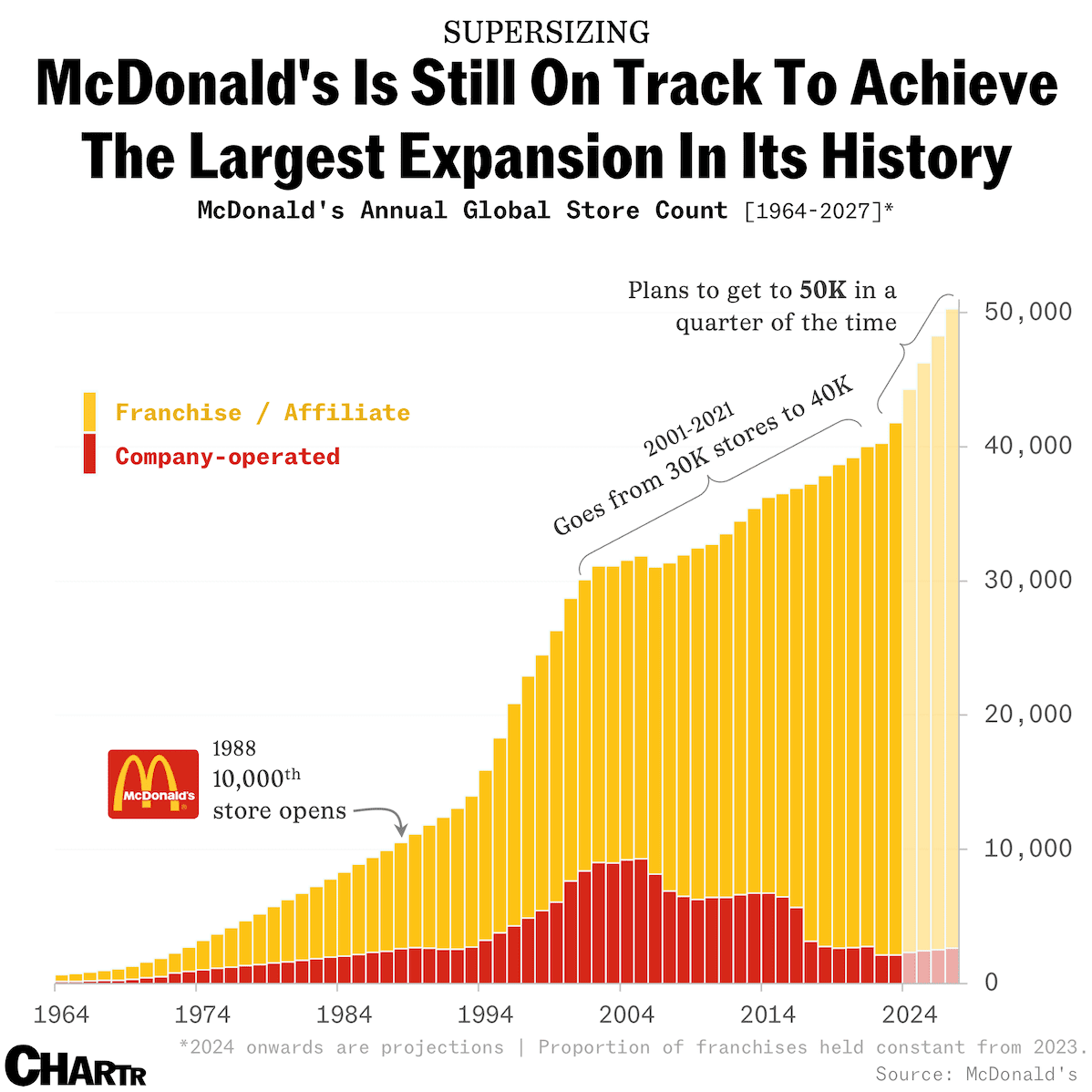If you’re like millions of people around the world, maybe you’ve grabbed a quick breakfast at McDonald’s. And if the fast-food giant has its way, even more people will be doing the same in the coming years. McDonald’s is in the midst of its most aggressive expansion ever, aiming to hit 50,000 restaurants worldwide by 2027. It’s a bold ambition, fueled by strong international growth even as its home market struggles with declining sales.
The company’s latest earnings report highlights this contrast. While McDonald’s international business is booming, its U.S. sales took a hit, falling 1.4 percent in the fourth quarter—the largest decline in nearly five years. The dip was steeper than analysts had expected and was partly driven by an E. coli outbreak in October that led the company to halt Quarter Pounder sales at about a fifth of its U.S. locations. Even the company’s signature pricing playbook, including a widely promoted $5 value menu, couldn’t completely offset the downturn.
Yet McDonald’s stock jumped 5 percent after the earnings announcement. Investors aren’t overly concerned with U.S. headwinds because the company’s international growth remains strong. Same-store sales in overseas licensed markets, led by Japan and the Middle East, rose 4.1 percent year over year. McDonald’s also reported that sales to members of its loyalty program surged 30 percent in 2024, reinforcing the strength of its customer retention efforts.
The real story, however, is in expansion. The company plans to add nearly 1,800 net new restaurants in 2025, most of them outside the U.S. This continues a years-long trend of McDonald’s pulling back slightly in its home market while aggressively expanding abroad. Between 2015 and 2021, the company actually closed about 900 locations in the U.S. while accelerating its footprint overseas.
Looking at McDonald’s growth trajectory over the decades, the pace is striking. The company hit 10,000 locations in 1988. It took another 13 years to reach 30,000 by 2001, and then two more decades to cross the 40,000 mark in 2021. Now, McDonald’s aims to jump from 40,000 to 50,000 in just six years—its fastest expansion period ever.
This rapid growth is being driven by franchising. The proportion of company-owned stores has been shrinking for years, as McDonald’s shifts toward a more asset-light model that relies on franchisees to open and operate new locations. This strategy allows the company to expand with lower capital investment while still benefiting from steady royalty and rent payments.
While McDonald’s has historically been a powerhouse in the U.S., its recent struggles reflect broader trends in the American fast-food industry. Consumer spending has been pressured by inflation, and some budget-conscious customers are opting for cheaper dining options or eating at home more frequently. The company’s challenges in the U.S. also underscore the limits of its pricing strategy, as even value menu promotions haven’t been enough to fully counteract declining traffic.
Internationally, the story is different. Many of McDonald’s fastest-growing markets are in regions with rising middle-class populations and increasing demand for convenient dining options. Markets like China, India, and the Middle East offer significant long-term potential, and McDonald’s is positioning itself to capture that growth.
For investors, McDonald’s strategy makes sense. By doubling down on international markets while maintaining a strong but slightly smaller footprint in the U.S., the company is playing to its strengths. The franchise-heavy model allows it to scale efficiently, while digital initiatives like its loyalty program help drive repeat business.
The big question is whether McDonald’s can maintain its momentum. Expanding at such a rapid pace comes with execution risks, including supply chain challenges, franchisee management issues, and potential regulatory hurdles in certain markets. The company will also need to navigate shifting consumer preferences, particularly as younger generations gravitate toward healthier and more sustainable dining options.
For now, though, McDonald’s is charging ahead. With 50,000 locations in sight, the Golden Arches are set to become even more ubiquitous. So whether you’re grabbing a coffee, a McMuffin, or just passing by another newly opened McDonald’s, one thing is clear—this isn’t just fast food, it’s fast expansion.





